A Historic Rowhouse for Less than $175k in Pullman: 11310 S. Champlain
There is no larger collection of historic rowhouses in Chicago than that in the Pullman neighborhood.
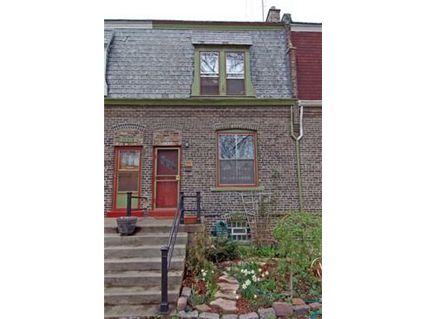
11310 S. Champlain was built in 1883 and, according to the listing, was the former home of Pullman Strike Organizer Jennie Curtis.
The kitchen has been remodeled. Garages can be added in the backyard (there is an alley system in the neighorhood.) There’s no square footage listed but this style rowhouse usually runs around 1100 square feet in the neighborhood. Here are the bedroom sizes:
- Bedroom #1: 15 x 13
- Bedroom #2: 10 x 7
- Bedroom #3: 10 x 7
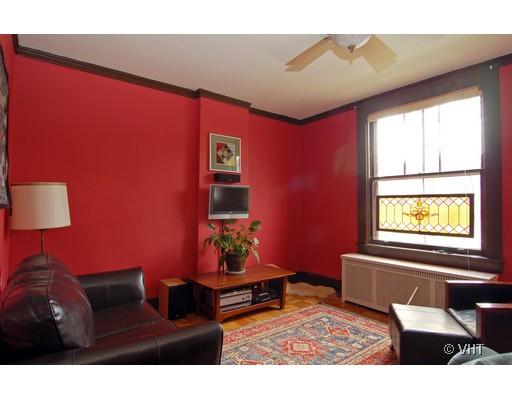
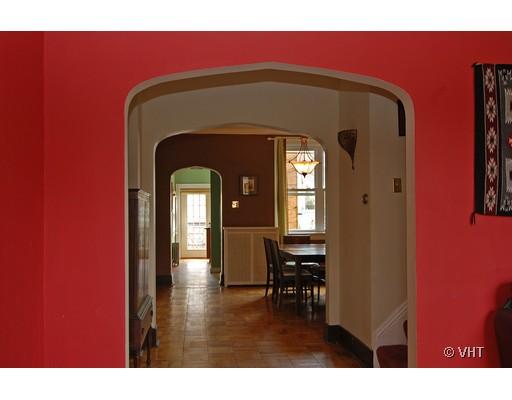

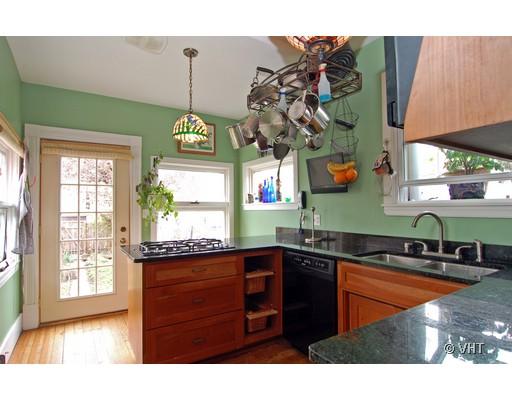


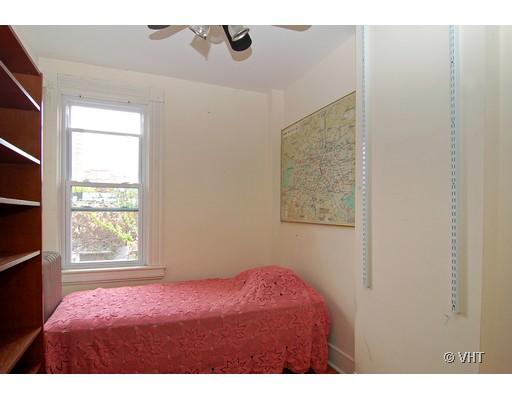
11310 S. Champlain: 3 bedrooms, 1.5 baths
- I couldn’t find a prior sales price (but rowhouses on the block have sold anywhere from $54,500 to $160,000 in the past eight years.)
- Currently listed for $167,000
- Taxes of $1,730
- No central air- window units?
- @Properties has the listing
Pullman has some absolutely adorable homes, and is a nice community. Unfortunately, there are very few services and you need to leave the community for all your basic needs. This home is typical of the row houses built there (I had a friend that owned one for several years). The kitchen is a complete add-on to the house (it was originally where the dining room is now). I think 167k is stretching it a bit.
Pullman is a cool, promising area on the south side, but I think it has a long way to go.
What a joke. You can get 3/1 or townhomes in many other communities that are far closer to downtown at this pricepoint.
Just more evidence of the bubble..
I rememebr seeing an ad on CraigsList a couple years ago for a rowhouse that was something like $85,000 and decided to drive down and check out the historic Pullman neighborhood. While the immediate area is full of homes that have characer and could be charming if fixed up, the area is surrounded by fairly heavy industry that doesn’t seem to be going anyplace anytime soon, and cutting the area off entirely from other neighborhoods. Too bad…
I know people who own in Pullman. They are cute and charming homes but be prepared for the worst.
$167K is a stretch, but it is a lovely, beautiful area otherwise surrounded by a sea of ugly. Probably something closer to $125/sq foot is more reasonable. It’s a fine location for downtown commuters; express trains from 115/Kengington make the trip downtown in about 25 minutes. But yeah, there is absolutely nothing going on anywhere nearby: retail, restaurants, etc.
http://recollectionbooks.com/siml/library/PullmanStrike.htm
re the strike, etc.
That price include a bullet proof vest?
re air conditioning — mls listing says 2 window/wall units. 😉
There’s a great municipal courthouse and police station just a few blocks away at 111th and State!
Why not just live in Indiana for 1/2 the cost? Pullman is almost there anyway.
Are you living in a 1880s rowhouse in Indiana for half the cost?
There are some people who like the idea of living in a historic district (and I’m not saying Indiana doesn’t have historic districts.)
I’ve never seen the Pullman rowhouses before, and had no idea they had so much charm and such good design.
Consider these homes were built for ordinary workers, and you have to be disgusted at how steeply inferior in design, detail, and quality most homes built even for well-off people are these days. Compare these to a Sandburg Village townhouse or commonplace highrise condo on the north side, and consider how far we’ve come that affluent people these days settle for crappy housing that a Pullman worker or some other tradesman type would have felt insulted to live in.
Having said that, I agree that the neighborhood there just doesn’t make it. But if you’re the independent type who wants space and grace for little money,doesn’t mind and perhaps even welcomes life off the beaten path, and perhaps would like to have a little garden out back, this is a nice alternative.
Then Laura take your snootiness and move to Pullman. I’d be way happier in my cookie cutter econobox modern condo in a neighborhood with such trendy amenities as a grocery store and gas station.
Coming from an older midwest town 300 miles southeast, I can say theses homes are garbage. If you like this architecture you can find it in cities like Cincinnati or Dayton for less than 1/3 the cost in a similarly bad neighborhood.
This could quite possibly the most absurdly priced property featured on this website. Anybody who could qualify for a 200k mortgage would be wise to avoid Pullman. There is little redeeming about forgotten industrial neighborhoods with high taxes.
I agree it’s overpriced for the neighborhood. The neighborhood doesn’t even have basic service, so I agree that the price is pretty far out there.
I was just remarking on how ratty most “modern” buildings are compared to what was once built. The stuff built in the 60s and 70s sure isn’t going to hold up as well as these places. Kind of pathetic that stuff built only 30 or 40 years ago looks sadder and is more outdated than this stuff.
The quality of homes in Pullman is a mixed bag. Some are in great condition like the one shown here, while others are 120 years old and it shows. You’ll have a nice house next to a run down house sort of like that. Also, it’s zoned a historic district so you can’t do anything to the place without Landmarks giving the final approval.
The real problem is the neighborhood. You’re only a few blocks away from Roseland, which is one of the highest crime areas in the City. Even with these problems, there is still a small community who own their pullman homes with pride. If you’re ever down in the area I suggest you check it out. But there really isn’t any reason to be down there except for the courthouse at 111th and State.
Laura,
Personal preferences. I much prefer the modern concrete/steel/glass aesthetic to the post-modern quasi-quainte-historicish schlock getting built today, for example. Hand-laid brick and other such ornamentation are great when done right (Pullman is a great example, actually) but the fact is that the realities of the twentieth century dictated simplification in design as labor costs went up. Building something like the Pullman rowhomes today could only happen at the higher end of the market: economics and building codes mandate this is so. You really want to go back to the 1880s labor market just because it meant worker’s houses were more ornate?
I prefer modern architecture too, however agree with her that the 1950s-1970s were probably the dark ages of modern architecture, there really wasn’t much that was built that still looks nice from that era.
I guess the pressing issue with today’s modern architecture is will it age gracefully? It certainly appears that most of the 50s-70s didn’t age gracefully at all.
I do like rowhouses too, however location trumps all in real estate and I’ve seen places like this building for 45-60k in lower cost cities. Given its neighborhood in Chicago the price is absurd.
David, I agree that the “post-modernn-quai-quainte-historist” stuff built now is awful. It is “traditional” as designed by people who were trained to have complete contempt for classical architecture.
I see many modern buildings that are really beautiful and will become classic, but by and large, twentieth century domestic architecture is a disaster. It’s interesting to drive through outer city nabes, then to older inner burbs, then to post WW2 auto suburbs, then to outer burbs that grew up in the 60s, 70s, and 80s, and look at all the design fads that seemed so much the thing when they went up that look so outdated now, even though the places are barely 25 or 30 years old.
I remember driving past one of those 70s-vintage townhouse deals with the fake mansard roof, in the suburbs of another city, back in the 80s, and was struck by how faded and past its time it seemed, though it was only 10 years old, while stuff in the city that was built 1890 through 1930 was as liveable as ever, even with old kitchens and elevators. It seems like most stuff built since WW2 is based on a really current fad that’s going to seem ridiculous to people the next few generations out.
Laura, I’m not sure I would lump mid-century modern in that category – where I’m from those homes command a premium.
More importantly – housing is subject to the same planned obsolescence as everything else these days. It’s only partially “style” that makes contemporary housing ready for the landfill as fast as a $9 toaster – they simply weren’t build well enough.
I recommend to do the annual home walk-through they have. They have a visitor center also. One place that I went into removed the front bedroom and open it up to the roof joist. Most taxes are $900 with credits. True that there are no restaurants but the police station does have a nice vending machine.
a good link
http://hometown.aol.com/PullmanRowHouses/
http://www.pullman-museum.org/